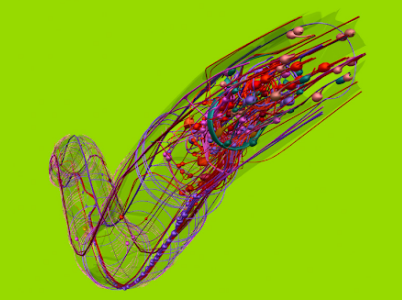December 23, 2013 report
OpenWorm project reaches new milestone—muscle simulation

(Phys.org) —The OpenWorm project has reached a significant milestone, team members report—muscular contraction that is able to drive the simulated worm forward in a stream of simulated water.
The goal of the OpenWorm project is simple and straightforward—building the first (others have tried and met with limited success) digital life form—getting there of course, is anything but. The idea is to replicate how it is that living organisms do what they do. In the case of the nematode, that means, among other things, swimming through water in a way reminiscent of an eel.
The project is an international open source collaboration and as such is open to anyone who wishes to participate. Of course those who choose to do so will find a certain degree of expertise in computer programming or biology will be needed. The team reports that the nematode was chosen as the first simulated life form because of its simplicity—the real worm has just 959 total cells—almost half of which are muscle cells or neurons.
Building a simulated life form is challenging—it would be a simple matter to simply draw a nematode and then animate it—Hollywood has been doing that for over half a century. What's difficult is to use computer code to create and simulate the underlying basic elements that make up a nematode and then have them perform the way they do with the real organism, resulting in virtually identical behavior. That means creating code that describes such things as how its cell muscle cells work and then how they work together in order to cause the entire organism to move in a way that suggests forward progress. In this instance, that's a lot of code and number crunching—it took three full days of rendering to produce less than a fraction of a second of action. This is significant progress—the OpenWorm project only just started this past May. The first simulation involved causing muscle cells to do nothing more than twitch.
The next step for project members is to connect simulated brain cells with muscle cells allowing the worm to control its own movements. The team also hopes to create a virtual version of the worm to allow for porting to an interactive web application for use by the general public.
© 2013 Phys.org


















